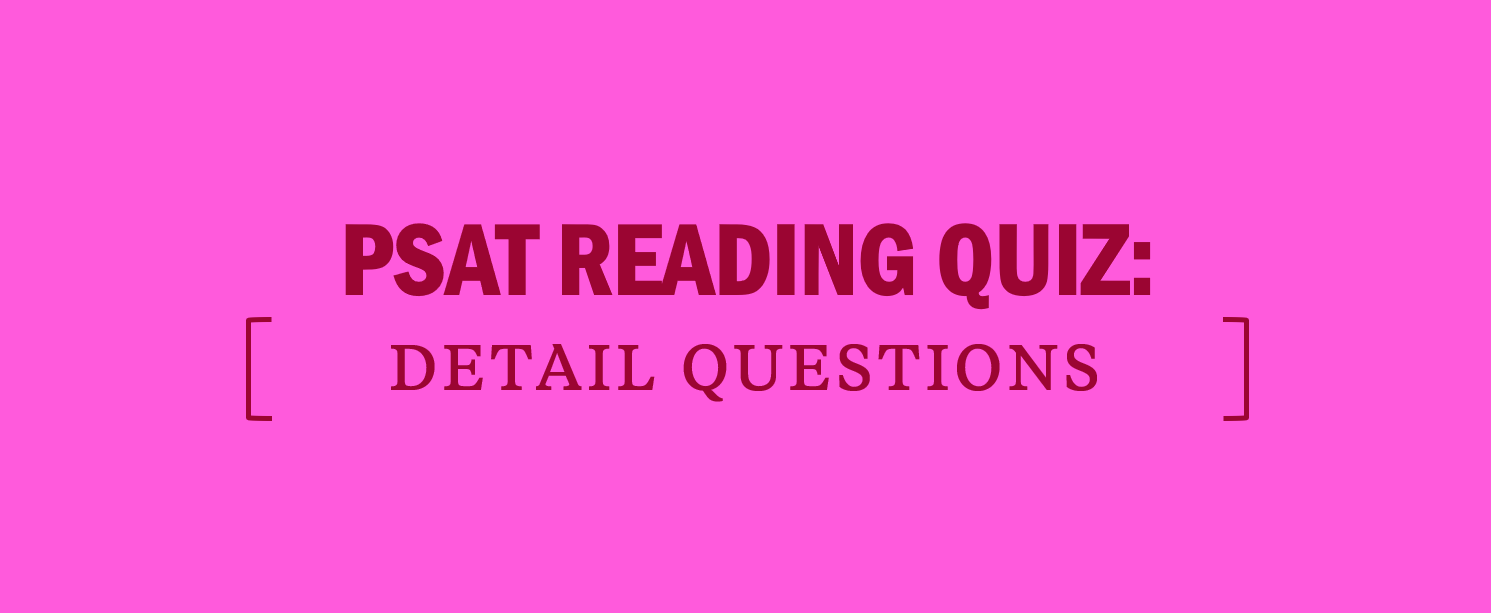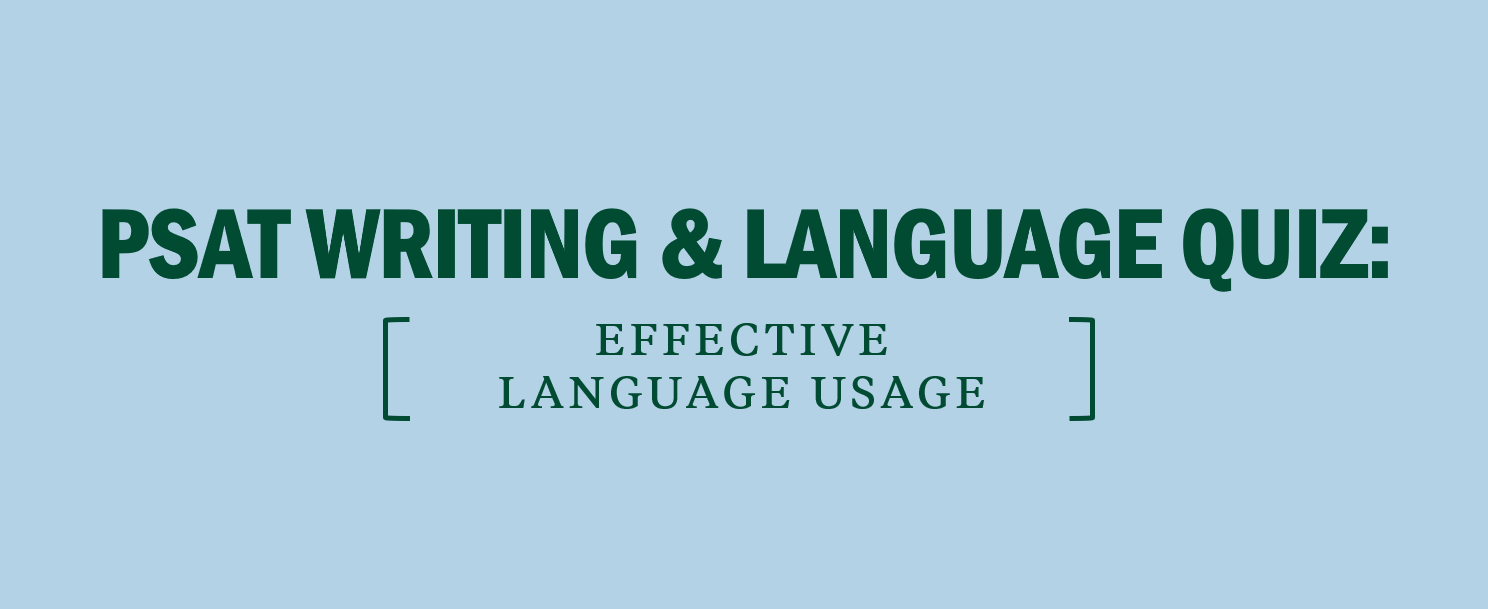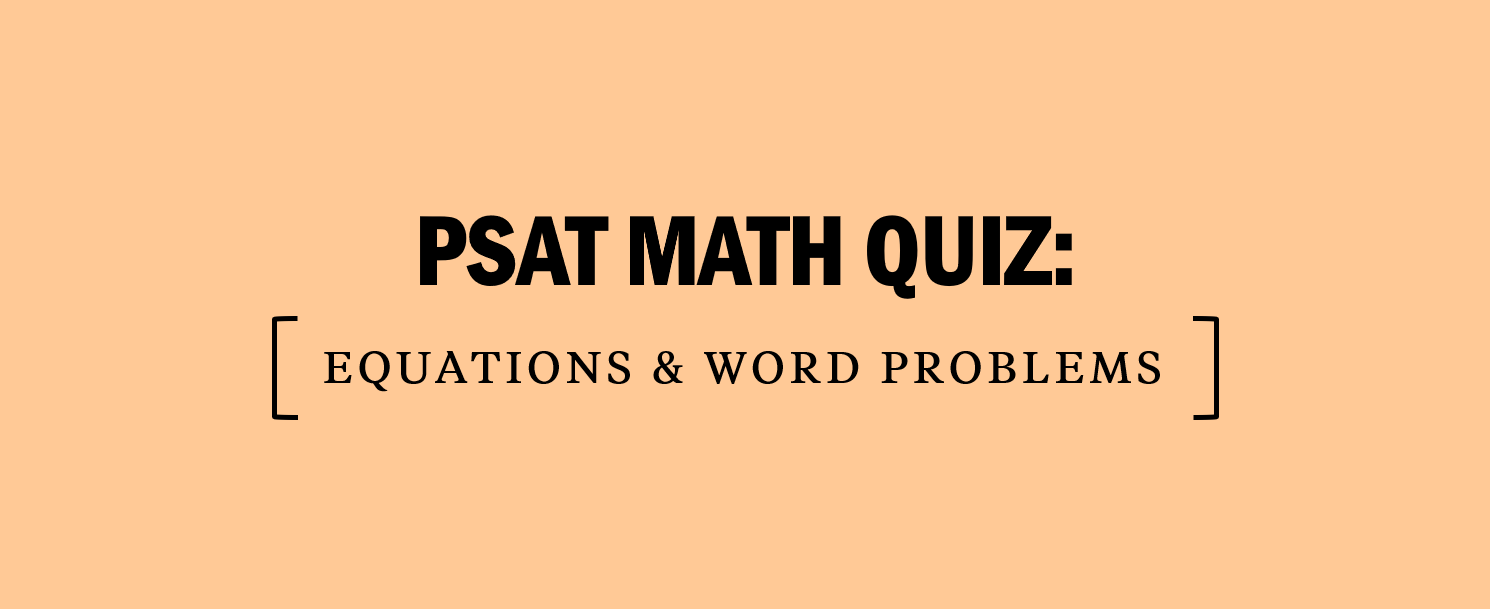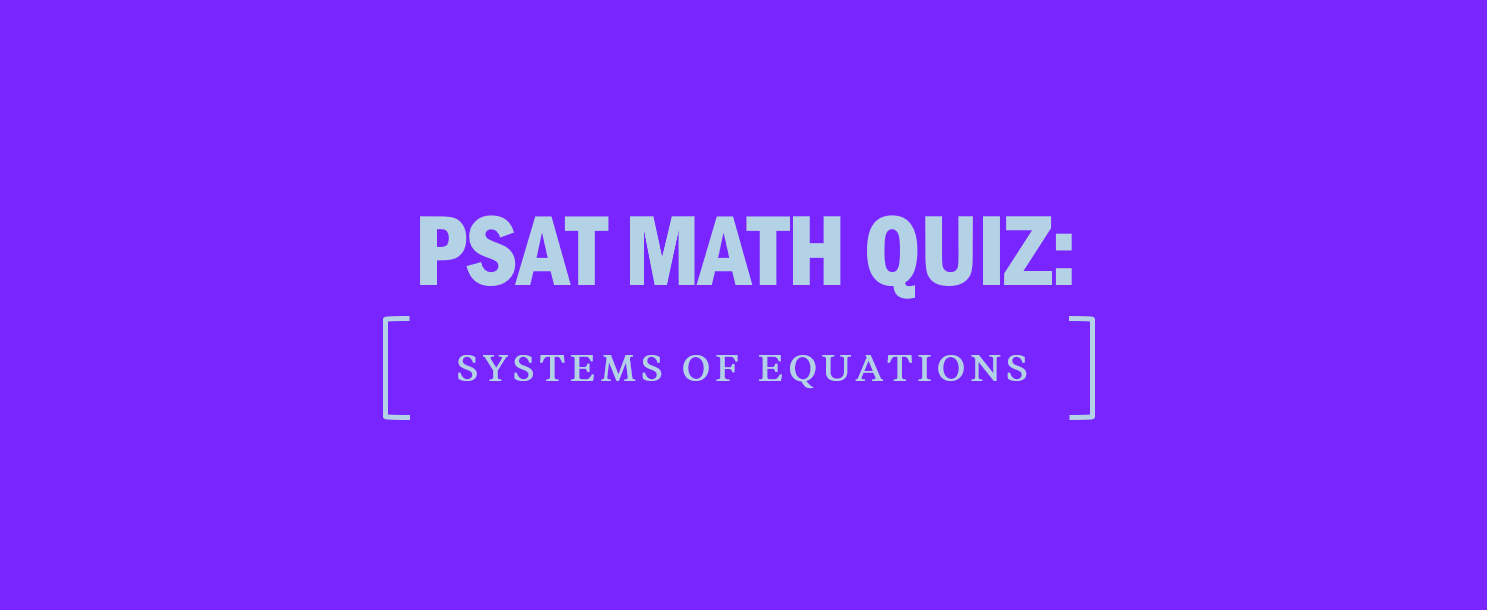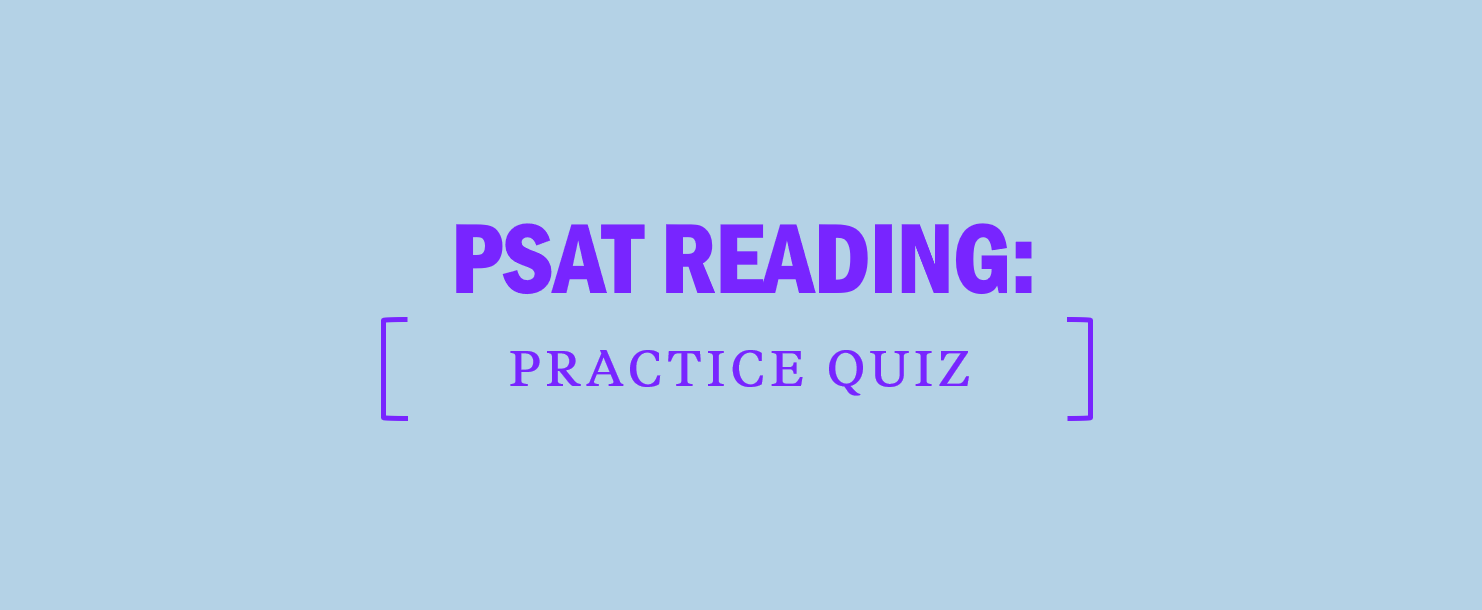What's Tested on the PSAT? (2025)
The first step to achieving PSAT success is to learn about the structure of the test and why it’s so important for your future. The PSAT is a 2-hour and 14-minute exam that tests your reading, writing, and math skills. Beginning in the fall of 2023, all test-takers will take the Digital PSAT. The more comfortable you are with the new test structure, the more confidently you will approach each question type, thus maximizing your score. In this guide, we’ll review what you need to know about taking the new digital version of the PSAT so you feel confident on Test Day.
[ READ NEXT: What’s a Good PSAT Score? ]
Changes on the Digital PSAT
As of fall 2023, the PSAT will no longer be a pencil-and-paper exam. With the exception of certain student accommodations, all students will take the Digital PSAT on a computer. The test makers have shortened the PSAT by about 45 minutes, but you will still receive a score out of 1520 that can help you qualify for scholarships and assess your readiness for the SAT. Not only will you have a shorter total exam time, but you will also have fewer questions to answer and more time to spend per question.
The Digital PSAT format has other helpful new features such as a built-in graphing calculator, text annotation tools, a timer, a zooming tool, and the ability to “cross out” answer choices you want to eliminate. These features will make it easy for you to navigate the test and manage the questions.
Questions on the Digital PSAT have undergone changes as well. The Reading and Writing passages and the Math questions are generally becoming shorter in length, making it easier for you to focus on what the questions are asking.
[ LEARN MORE: College Board Going with Completely Digital SAT ]
PSAT Test Structure
The structure of the PSAT is changing slightly when the test goes digital. The Digital PSAT is 2 hours and 14 minutes long and consists of two sections: (1) Reading and Writing and (2) Math. Here’s how the PSAT will be structured:
| SECTION | MODULE | ALLOTED TIME | QUESTION COUNT |
| Reading & Writing | Module 1 | 32 minutes | 27 |
| Reading & Writing | Module 2 | 32 minutes | 27 |
| Math | Module 1 | 35 minutes | 22 |
| Math | Module 2 | 35 minutes | 22 |
| Total: | 4 modules | 134 minutes | 98 questions |
The PSAT Math Test: What to Expect
The PSAT Math section includes 44 questions divided between two modules. You have 35 minutes to answer the questions in each module. The PSAT math section tests your ability in four content areas: algebra, advanced math, problem-solving and data analysis, and geometry and trigonometry.
In the chart below, we break down what’s tested on the PSAT Math test:
| Algebra (13-15 questions) | Solving, creating, and using: – Linear equations – Linear functions – Linear inequalities – Systems of linear equations Making connections between different representations of linear relationships |
| Advanced Math (12-14 questions) | Interpreting, solving, creating, and using: – Equations with absolute value – Equations with radicals – Quadratic equations – Exponential equations – Polynomial equations – Rational equations – Other nonlinear equations |
| Problem Solving and Data Analysis (7-9 questions) | Solving questions using: – Ratios – Rates – Proportions – Units – Percentages Analyzing and interpreting data, including distributions and scatterplots Calculating and interpreting: – Probability and conditional probability – Mean, median, and range Comparing distributions’ standard deviations |
| Geometry and Trigonometry (4-6 questions) | Solving questions involving: – Area and volume – Lines, angles, and triangles – Right angles and trigonometry |
PSAT Math Question Types
Questions across the PSAT Math section consist of both multiple-choice and some student-produced responses, on which you will type in your answer. About 25%, or 11 of the questions, will be student-produced responses, and the rest will be 4-option multiple-choice questions. About a third of the questions in the PSAT Math section will be word problems that are situated in a real-world context; the rest will be straightforward math questions.
Here’s how the 44 PSAT Math questions break down:
| QUESTION TYPE | QUESTION COUNT |
| Multiple-Choice Questions | ~33 |
| Student-produced Responses | ~11 |
| Total: | 44 |
Calculator Use on the PSAT Math Section
You are allowed to use a calculator on all questions in the Digital PSAT Math section. The PSAT digital test platform has a built-in graphing calculator that you can use, or you can bring your own approved calculator. Check College Board’s website for the most up-to-date list of approved calculators you can bring to the PSAT.
The PSAT Reading and Writing Test: What to Expect
The PSAT Reading and Writing section includes 54 questions divided between two modules. You will have 32 minutes to answer the questions in each module. The PSAT Reading and Writing section will focus on your comprehension, reasoning, and editing skills with questions based on short academic passages taken from a variety of content areas.
What’s covered on the PSAT Reading and Writing test?
In the chart below, we break down what’s tested on the PSAT Reading and Writing test.
| Information and Ideas (12-14 questions) | Using reading comprehension, analysis, and reasoning skills to answer questions about: – Main ideas – Details – Command of Evidence (text and graphs/tables) – Inferences Interpreting, evaluating, and, integrating ideas |
| Craft and Structure (13-15 questions) | Using reading comprehension, analysis, and reading skills to answer questions about: – The meaning of words in context – The purpose of texts – Connections between related texts |
| Expression of Ideas (8-12 questions) | Using revision skills to answer questions about: – Synthesizing ideas to achieve rhetorical goals – Making effective transitions |
| Standard English Conventions (11-15 questions) | Using editing skills to follow Standard English conventions, including: – Sentence structure – Punctuation – Verb agreement – Pronoun agreement – Modifier agreement |
PSAT Reading and Writing Question Types
Each question on the PSAT Reading and Writing section is accompanied by a short passage, usually a paragraph in length. Some questions may have two short passages about the same topic, and a few questions will have a bullet point list of notes about a topic. Passages will draw from literature, history/social studies, the humanities, and science. Some questions will also be accompanied by a graphical representation of data, such as a graph or table.
Here’s how the 54 PSAT Reading and Writing questions break down:
| ALLOTTED TIME | QUESTION COUNT | |
| Module 1 | 32 | 27 |
| Module 2 | 32 | 27 |
| Total: | 64 | 54 |
How is the PSAT scored?
Your total PSAT score will range from 320 to 1520 and is calculated by adding your section score for Reading and Writing to your section score for Math. The PSAT is adaptive—how well you do on the first module of the Reading and Writing section or the Math section determines the questions you see in the section’s second module.
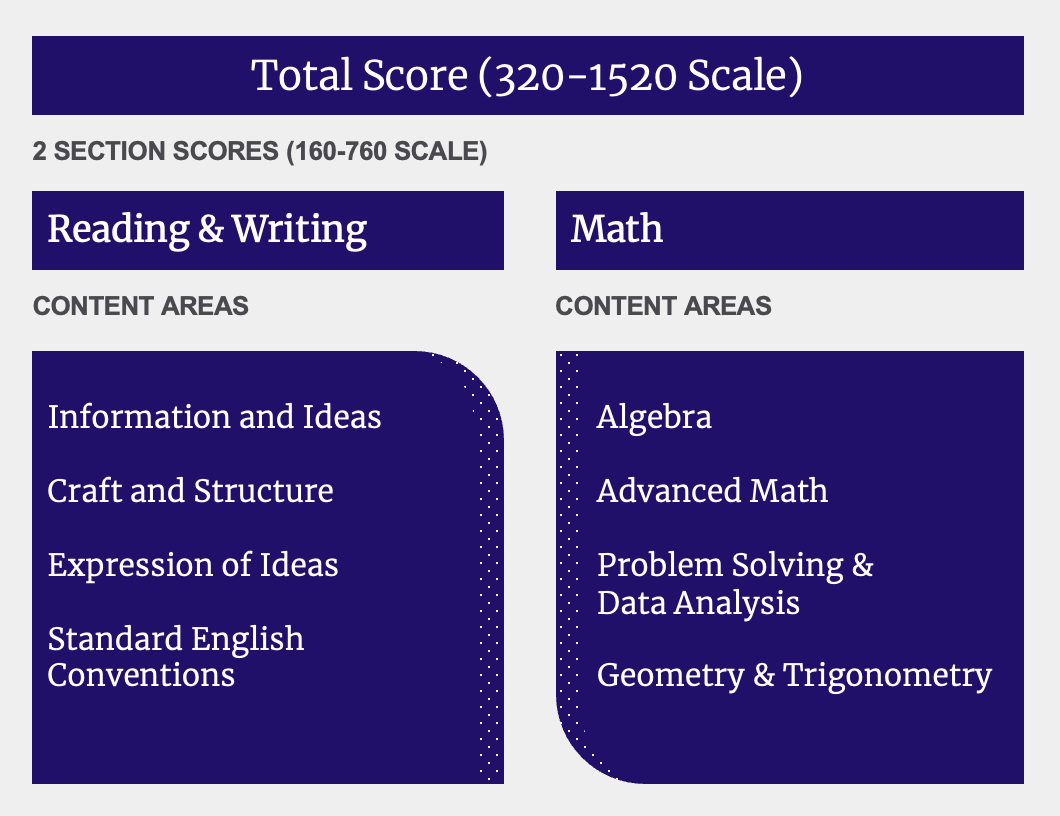
Doing well on the first module, also known as the routing module, will send you to a higher difficulty second module. This will give you a chance to earn the very top scores for a section (either Reading and Writing or Math). Bear in mind that even if you are routed to an easier second module, you can still earn a competitive score on the PSAT. Don’t spend time trying to figure out which difficulty level you were routed to; this will only waste your brainpower and time. Your focus should be to do your best on every question, regardless of which module it is in.
The PSAT also gives you a percentile ranking, which allows you to compare your scores with those of other test-takers. For example, a student who scored in the 63rd percentile did better than 63 percent of all others who took that test.
When and where do I take the PSAT?
The PSAT/NMSQT is offered every October. This year, the testing window is October 1–October 31, 2025; schools will administer the exam on a school day within this window. There is a Saturday testing option on October 11, 2025 that some schools may choose. The PSAT is administered at your high school, not at a testing center. Homeschooled students can sign up at a participating local high school. Some high schools recommend that their sophomores take the test for additional practice, but sophomores who take the PSAT are not eligible to qualify for the National Merit Scholarship unless they are in an accelerated program and are preparing to graduate the following year. However, some schools will administer the test to their students only once (at the beginning of junior year). If this is the case, sophomores wanting to take the PSAT need to get permission from their guidance counselors.
Why should I take the PSAT?
The PSAT is also known as the Preliminary SAT, and is a practice version of the SAT. You can use your results from the PSAT to predict your score on the SAT or the ACT. Your performance on the PSAT can also give you insight on how to structure your study plan for the SAT or ACT and help you pinpoint areas on which you need to focus. Additionally, taking the PSAT can lead to more money for college through the National Merit Scholarship Program. Your PSAT scores are automatically submitted for consideration, and you may be selected as a National Merit Scholarship Finalist and ultimately receive an award.



